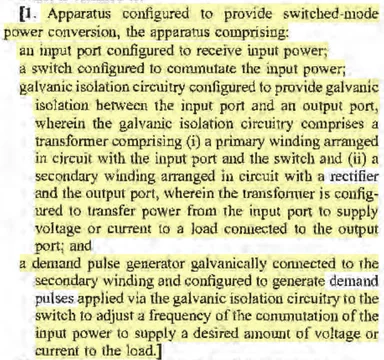Clients and co-counsel often ask whether it makes sense to object to an R&R issued by a Magistrate Judge. The answer depends on many factors. For example, why was motion denied? What are the chances it will be reversed? What is the client's commitment level to the case? What is the impact of the motion on the case? Etc.
Sometimes, though, what people really want to know is "would the district judge ever decline to adopt an R&R?" The answer to that is that yes, the court will sometimes declines to adopt an R&R, but it is definitely the less common outcome.
Yesterday, Judge Andrews did just that: he declined to adopt an R&R on a motion for summary judgment of non-infringement. The magistrate judge had apparently (the opinion is sealed) recommended denying defendants' motion for summary judgment of non-infringement due to certain factual inconsistencies in the argument.
Judge Andrews, however, held instead that the defendants could not infringe under the Court's claim construction, and granted the summary judgment motion:
I construed several claim terms to exclude the "use" or "involvement" of a "set-top box for remote control." (D.I. 168 at 2-3). . . . According to [plaintiff], "there is no evidence that Charter's [set-top box] ever is informed what video was selected by the user, and Charter's [set-top box] does not send any messages to the [video-on-demand] server prior to video playback." . . . The claim construction, however, requires that the set-top box cannot be "use[d]" for or "involve[ed]" in remote control. That other components are also involved, or even more prominently involved, in remote control is of no import. The process outlined in Charter' s interrogatory [response], which is undisputed, uses and involves a set-top box for remote control. . . . Defendants' motion for summary judgment of non-infringement on all asserted claims of U.S. Patent Nos. 6,754,907 and 6,757,907 (D.I. 188) is granted.
Judge Andrews noted that the Magistrate Judge's recommendation to deny the motion turned on factual inconsistencies, but held that they do not matter on the ultimate question of infringement:
The Magistrate Judge found that Charter's briefing contained statements of fact that were inconsistent with the interrogatory response. . . . Ultimately, I agree with Charter that these details are not material. . . . Even if there are inconsistencies, they relate to what information is communicated to and from the set-top box during the " Send-to-TV" process. . . . I do not think the precise information relayed to and from the set-top box matters. The interrogatory makes clear that the set-top box receives signals from a user's remote control, and in response sets off a chain of events that ends in the video-on-demand content being played on the user's television. Thus, the set-top box is clearly " use[d]" and "involve[d]" in the remote control of the video-on-demand system.
It looks like the case is over for plaintiff (its third asserted patent was previously dismissed); the Court ordered the parties to file a joint status letter.
How did they get early summary judgment?
Defendants often want to pursue early summary judgment, to end the case without having to go through full (and expensive) discovery.
Looking at the docket, it appears that the defendants here had filed a lengthy letter earlier in the case asking permission to file an early summary judgment motion on this issue. The Court denied it:
ORAL ORDER: Charters request for permission to file an early summary judgment motion . . . is DENIED. I am not persuaded that the issues raised would result in resolution of the case. Charter is not prohibited from raising the issue again after the Markman ruling.
Later, after the Markman decision went in the defendants' favor, the parties stipulated to permit defendant to file an early summary judgment motion, and to stay the case pending the outcome of that motion (defendant also agreed to provide "detailed" responses to certain interrogatories).
Interestingly, a few months after the reply brief on the motion, the parties stipulated to stay the case entirely—including the pending motion—because they had reach an agreement in principle. But four months after that, they sought to un-stay the case because they couldn't agree on unspecified details of the settlement.
If you enjoyed this post, consider subscribing to receive free e-mail updates about new posts.




